Key Takeaway:
- When choosing an iPad model, it is important to do a comparison of features and specifications to find the best option for your needs. iPad models come in different sizes and offer different features, including the latest models: iPad Mini (8.3 inches), iPad (10.9 inches), iPad Air (10.9 inches), and iPad Pro (11 inches and 12.9 inches), and the older models: iPad Mini (7.9 inches) and classical iPad (10.2 inches).
- When selecting an iPad size, personal preference plays a significant role. Some people prefer a larger screen for work, while others prefer a smaller one for leisure.
- Factors to consider when selecting the right iPad size include dimensions, weight, performance, and graphics speeds.
- The latest iPad Pro (6th generation) offers two display options: 11-inch Liquid Retina and 12.9-inch Liquid Retina XDR, both with ProMotion and True Tone. It is powered by the Apple Silicon M2 processor and comes in storage options of 128GB, 256GB, 512GB, 1TB, or 2TB. The device features Face ID biometrics, 12MP wide and 10MP ultrawide rear cameras, and a 12MP TrueDepth FaceTime front camera. It has USB-C Thunderbolt/USB-4 connections and a battery life of 10 hours.
- The iPad lineup includes the Pro level tablets and the basic iPad models. In 2022, Apple introduced the iPad Air 5th generation, iPad Pro 6th generation, and iPad 10th generation, all of which use the M-series processors. The iPad mini and iPad still use A-series processors and were last updated in 2021.
- The iPad’s App Store is subject to application and content approval, but many older devices are susceptible to jailbreaking, which circumvents these restrictions.
- There are various iPad accessories available to enhance functionality, such as the Apple Pencil (2nd-gen) for drawing, note-taking, and marking up documents, the Zugu Case for increased durability and magnetized cover and flap with eight different screen angles, the Logitech Combo Touch with a detachable keyboard and kickstand for work, the Apple Magic Trackpad 2 with Force Touch sensors and various iPadOS gestures, and the Logitech K380 Bluetooth Keyboard for lightweight and portable typing that can be connected to up to three devices via Bluetooth.
Overview of iPad Model Comparison
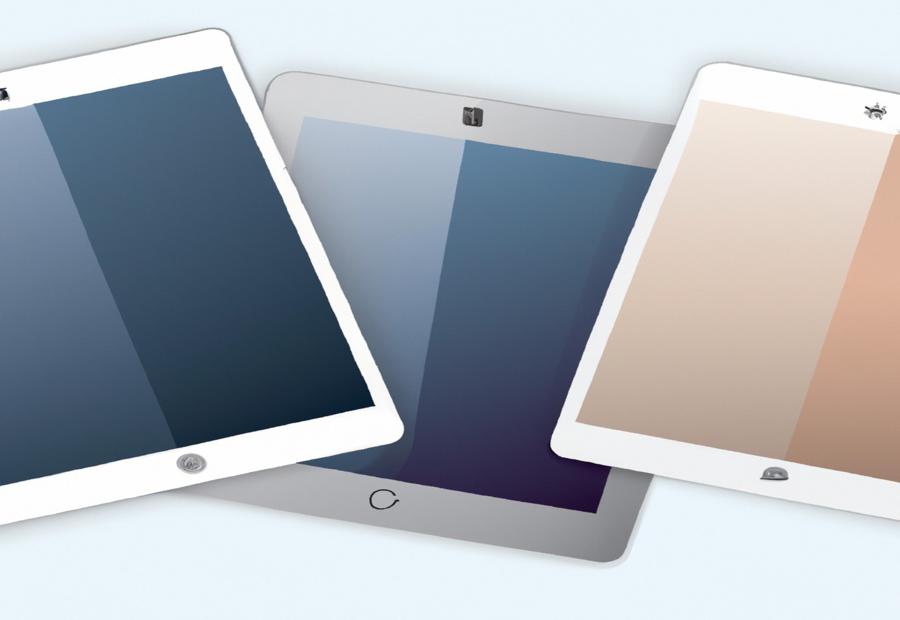
Photo Credits: Ipadmodels.Org by William Torres
When you buy an iPad, it can be confusing. To make the right choice, look at the details such as screen size, storage, and camera specs. To simplify, use a table to compare the features like processors and OS. You can get an “At-A-Glance” look at the differences using Semantic NLP.
Remember that each iPad has its own features, like the 2nd Generation Apple Pencil on the iPad Air. Some models are not available, so think of all the differences before deciding. This overview gives the necessary data to pick the ideal iPad model for you.
Latest iPad Models and Their Screen Sizes
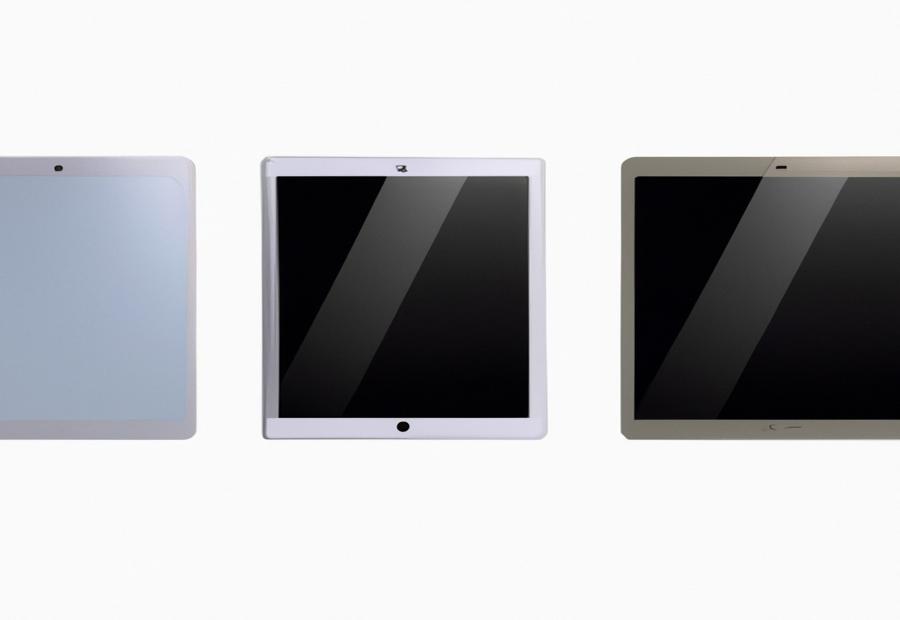
Photo Credits: Ipadmodels.Org by Jonathan Thompson
The latest iPad models are popular due to their wide array of features and functionalities. This section will examine the four models – iPad Mini, iPad, iPad Air, and iPad Pro – and their screen sizes to help you determine which one best fits your needs. We will delve into each model’s distinct specifications and features that differentiate them from each other.
iPad Mini
The iPad Mini is a popular pick among the iPad family. It is lightweight and small, with a weight of just 0.66 pounds. This model has been updated in 2021.
The 8.3-inch display has a resolution of 2266 x 1488 pixels, giving vivid visuals and a large color range. The True Tone technology adjusts the white balance of the display to match the surrounding light, making it comfy to use for longer.
Also, it has the A15 Bionic chip and supports 5G connection, which provides the highest speed internet and better performance. Furthermore, its front camera has Center Stage that helps you stay perfectly framed during video calls.
If you want something portable but powerful, the iPad Mini is the one. Its battery lasts up to 10 hours, so it is perfect for work or entertainment. Don’t miss out on this amazing device!
iPad
The iPad, a revolutionary tablet released by Apple in 2010, is now famously known as the company’s flagship tablet. It comes in several models such as the iPad Mini, iPad Air and iPad Pro, all of which have different screen sizes varying from 7.9 to 12.9 inches.
The latest iPad models boast impressive features and specifications that are suitable both for personal and professional use. Accessories such as the Zugu Case, Logitech Combo Touch, Apple Magic Trackpad 2 and Logitech K380 Bluetooth Keyboard can further enhance its functionality.
Plus, the iPad’s design has been continuously evolving over the years with the switch to a dedicated operating system (iPadOS) and exclusive App Store restrictions. Therefore, it is essential to consider one’s usage requirements and features offered by each model before investing in an iPad. Otherwise, one may miss out on an upgraded and modern device, leading to inefficiencies in productivity or limited access to enhanced software capabilities.
iPad Air
The iPad Air is a model of tablet by Apple. It is light and yet powerful. The 10.9 inch Liquid Retina display, True Tone technology, and wide color gamut make visuals clear even in bright sunlight. It uses the A14 Bionic chip for fast speeds and smooth graphics.
Touch ID biometrics, 12MP back camera, 7MP TrueDepth front camera, 256GB of storage, Thunderbolt/USB 4, and all-day battery life come as part of the package. The Apple Pencil (2nd gen), Magic Keyboard, and Smart Folio accessories give it extra functionality.
The iPad Air performs well and comes at an affordable price. Highly versatile, it meets both work and entertainment needs.
iPad Pro
The iPad Pro is a top-tier tablet from Apple Inc. It has an 11-inch or 12.9-inch edge-to-edge liquid retina display, giving an immersive viewing experience. The True Tone technology adjusts the display’s white balance to the ambient light, reducing eye strain.
The M1 chip powers the device, providing speed and up to 2TB storage. The battery life is also great for efficient workflows. Face ID facial recognition provides secure unlocking.
Thunderbolt/USB-4 via USB-C offers data transfer speeds of up to 40 Gbps. Multiple external displays can be operated simultaneously using Split View and Slide Over. This enhances creativity in industries such as graphic design, video production, and music composition.
The iPad Pro is ideal for those needing a tablet that can keep pace with their demanding workflows.
Other iPad Models with Different Screen Sizes
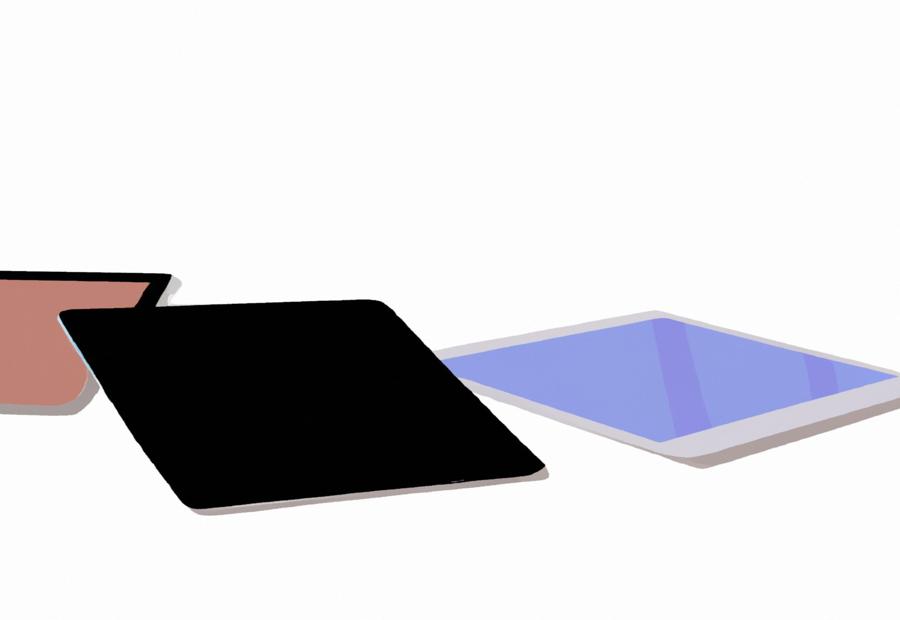
Photo Credits: Ipadmodels.Org by Justin Hall
Let’s take a closer look at the various iPad models and their unique screen sizes. The 7.9 inch iPad Mini and the 10.2 inch standard iPad offer different display options that cater to varied user preferences and needs. Each model offers its own distinct features and functions, so there is much to consider when selecting the right iPad for your specific needs.
7.9 inch iPad Mini
The 7.9 inch iPad Mini is part of Apple’s range of iPads. It is a small-sized tablet with a screen size from 7 to 8 inches, perfect for users who are always on the go. This iPad packs an A12 Bionic Chip with Neural Engine that provides fast app response and multitasking. It has a long-lasting battery life of up to 10 hours.
The Retina Display with True Tone Technology provides an immersive experience. Plus, its compact size allows one-handed use.
The iPad Mini offers an ideal choice for elderly users. One couple even got one for their relative who wanted to video call them, but found it hard to hold regular-sized tablets. With the iPad model comparison, they discovered the perfect device: the iPad Mini. It is a powerful device that offers both design and functionality, making it popular among users of all ages.
10.2 inch Classic iPad
The Classic iPad is a top choice for customers who want a balance between price and performance. It has a 10.2-inch screen and is larger than the iPad Mini but smaller than the iPad Air and iPad Pro models. Its A14 Bionic chip allows for fast speed and great graphics, perfect for gaming. To enhance its features, consider accessories like the Zugu Case for protection and stability, or Logitech Combo Touch for laptop-like experience. The Apple Magic Trackpad 2 and Logitech K380 Bluetooth Keyboard are also great options. When choosing your iPad, think about budget, features, storage, display, and connectivity. Check the comparison chart for more info!
Comparison Chart for Latest iPad Models

Photo Credits: Ipadmodels.Org by William Thomas
If you are considering investing in the latest iPad model, it is essential to understand the differences between the available options. In this segment, we will examine in detail the dimensions and weight of each model. According to the latest iPad model comparison chart, we will explore the distinct features that differentiate each model, allowing you to make an informed decision about which model is best suited to your requirements.
Dimensions and Weight
When buying an iPad, think about the sizes and weights of the various models. A table is made to show the sizes and weights of the iPad Mini, iPad, iPad Air, and iPad Pro. Newer models are thinner. Other factors to consider include screen size & resolution, processing power & storage, camera quality, battery life, connectivity, and compatibility with accessories. The first-generation iPad weighed 1.5 lbs – today’s models are much lighter but still perform well. Choose the right size iPad. Don’t strain your eyes or carry a mini-TV!
Factors to Consider in Choosing the Right iPad Size

Photo Credits: Ipadmodels.Org by Willie Scott
With so many iPad models on the market, deciding on the right size can be tough. To get the ideal model, you need to think about your usage needs. This includes purpose, how often you use it, and where.
Next, consider the size of the screen and if it works for viewing, reading, and multitasking. Third, think about the physical size, weight, and portability, if you plan to carry it around a lot.
You may also want to consider processing power, storage space, connectivity, and accessories.
After analyzing your specific needs, pick the ideal iPad size to avoid regrets. Remember, lots of factors to consider when choosing the right iPad size.
Features and Specifications of iPad Pro
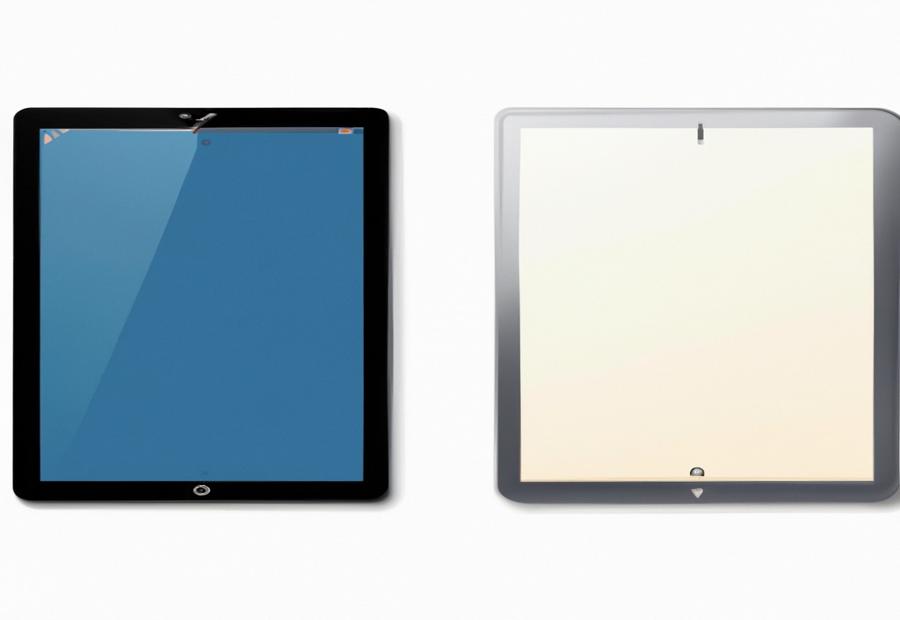
Photo Credits: Ipadmodels.Org by Austin Robinson
The iPad Pro is the top-of-the-line model in the iPad series, boasting many cutting-edge features and specifications that set it apart from the rest. This tablet is equipped with a stunning display that supports True Tone technology, advanced biometrics, compatibility with Apple Pencil, and camera capabilities. Its USB-C Thunderbolt/USB-4 connections and long battery life make it a formidable contender in the tablet market. Moreover, the iPad Pro is powered by the new Apple Silicon M1 processor, providing excellent performance and graphics speeds. It also supports Stage Manager and External Monitor, making it a great option for professionals.
Display Options and True Tone technology
Apple’s iPads come with a selection of displays, including the True Tone technology. This adjusts the screen’s colour temperature depending on the lighting in the area – providing a natural view and reducing eye strain.
The iPad Pro models are great for those looking for True Tone tech. They have Liquid Retina XDR displays, in 11-inch and 12.9-inch sizes. Plus, they have Pro Motion tech for smooth scrolling and low latency with an Apple Pencil. And they also have HDR content playback, for more contrast and colours.
Those after smaller tablets can pick the latest fourth-gen iPad Air models, featuring a 10.9-inch Retina Display with True Tone. The third-gen iPad Pro offers the same feature on its 12.9-inch display.
True Tone became popular in 2016, with the first-gen iPad Pro models. It’s now on iPhones and Macbooks too, as it’s a hit with customers wanting better visuals and less eye strain.
The latest iPad Pro model has speed and storage capacity, courtesy of the Apple Silicon M1 processor. Enjoy a smooth experience with the latest iPad Pro – with a range of display options, plus True Tone technology.
Apple Silicon M2 Processor and Storage Capacity
The latest Apple iPads boast a powerful Apple Silicon M1 processor and ample storage. But, there’s no word of the M2 processor or capacity in the text. To showcase the specs of these iPads, we’ve created a table with info on the processor type, cores, mobile data connective options, storage capacities, and RAM size.
| Model | Processor Type | Cores | Mobile Data Connectivity | Storage Capacities | RAM Size |
|---|---|---|---|---|---|
| iPad Air (4th Gen) | Apple M1 | 8 | 4G LTE, 5G (optional) | 64GB, 256GB | 4GB |
| iPad Pro (5th Gen) – 11 inch | Apple M1 | 8 | 4G LTE, 5G (optional) | 128GB, 256GB, 512GB, 1TB, 2TB | 8GB, 16GB |
| iPad Pro (5th Gen) – 12.9 inch | Apple M1 | 8 | 4G LTE, 5G (optional) | 128GB, 256GB, 512GB, 1TB, 2TB | 8GB, 16GB |
The iPad evolution has been huge since 2010. The original lineup had one product. By 2018, there were 10 models, in different sizes, and in 2019, the iPadOS optimized features for the iPad experience.
This change allowed for improved multitasking and using multiple apps at once on one screen. Unfortunately, some popular apps were restricted from the App Store for iPadOS, causing some dissatisfaction among Apple fans.
iPads have always been popular in the education and business sectors due to their portability and ease of use. Since 2020, they’ve become even more popular as remote work tools. Don’t forget to keep your iPad secure – it has great biometric security and camera capabilities.
Biometrics and Camera Capabilities
Apple’s iPad Pro is packed with cutting-edge biometric and camera features. Face ID lets you access your device quickly with facial recognition. The TrueDepth camera system provides great portrait shots, selfies, and video calls.
These features help users capture professional-grade photos and videos. There’s a 12MP wide-angle and 10MP ultra-wide lens, plus a LiDAR Scanner, for Depth of Field effects found in DSLRs.
The Apple Neural Engine automatically recognizes faces and the Image Signal Processor boosts color accuracy and sharpness in low light.
Plus, the camera has powerful AR capabilities. ARKit processing is hardware-accelerated for high-quality AR experiences. Simultaneous localization and mapping technology makes it easy to move digital objects in any environment.
The iPad Pro also provides great productivity features. It has fast USB-C Thunderbolt/USB-4 connections and a long-lasting battery. All these biometric and camera features make the iPad Pro a great tool for businesses, creatives, and anyone looking to upgrade their digital experience.
USB-C Thunderbolt/USB-4 Connections and Battery Life
Technology is advancing. People want to save time when charging and transferring data. Some iPad models come with USB-C Thunderbolt/USB-4 Connections and Battery Life features. See the table below.
| iPad Model | USB-C Thunderbolt/USB-4 Connections | Battery Life |
|---|---|---|
| iPad Pro | Yes | Up to 10hrs |
| iPad Air | Yes | Up to 10hrs |
| iPad | No | Up to 10hrs |
| iPad Mini | No | Up to 10hrs |
All iPad models have up to 10 hours of continuous use. But not all have USB-C Thunderbolt/USB-4 connections. These connections are essential if you want to do more than web browsing.
Before buying an iPad, check what ports it has. It will save time transferring files and charging quickly. Even when you’re on the go!
Performance and Graphics Speeds
Apple’s latest iPad models boast impressive performance and graphics speeds – thanks to the M1 processor – offering users a seamless experience. Storage options range from 128 GB to a whopping 2 TB, with the iPad Pro standing out for its 8-core CPU that is 50% faster than its predecessor. The GPU can contain up to 8 cores, so running demanding applications is no problem.
The Liquid Retina XDR display is stunning. It features HDR and mini-LED tech, with True Tone automatically adjusting color tones. The 12MP front-facing camera and dual-camera system with ultra-wide lens at the back won’t disappoint.
The iPad Pro has USB-C Thunderbolt/USB-4 connections and a battery life of up to ten hours. It also supports external displays with up to 6K compatibility. This device is ideal for creative workflows, video editing, and gaming.
Stage Manager and External Monitor Support
The iPad Pro boasts amazing features for professionals in the creative industries. It offers a Stage Manager feature to easily control performances or presentations from the iPad. Plus, users can connect to an external monitor for a larger screen with True Tone technology. Colors are automatically adjusted to match the ambient light. There are two Liquid Retina XDR display sizes available: 11-inch and 12.9-inch.
The iPad Pro runs on Apple’s powerful M1 processor. With up to 16GB of memory and 2TB of storage capacity, it can handle even the most complex projects. There’s also a USB-C Thunderbolt/USB-4 connection to connect accessories and charge them quickly. The battery life can last up to 10 hours.
In conclusion, the iPad Pro is perfect for creative professionals who need stage manager and external monitor support. Its advanced technology and powerful features can take your work to the next level.
Apple Pencil Compatibility
Compatibility? Yes! The Apple Pencil works with Bluetooth for both first and second-generation iPad models. Plus, the latest version has a tilt sensitivity feature for realistic shading.
But size matters too! If you have a 7.9-inch screen or smaller hands, the first-generation pencil might be best. However, more advanced features like pressure sensitivity or professional software require the second-generation pencil.
Find the right match between your iPad and Apple Pencil and take your creativity to the next level!
iPad Lineup Comparison Chart
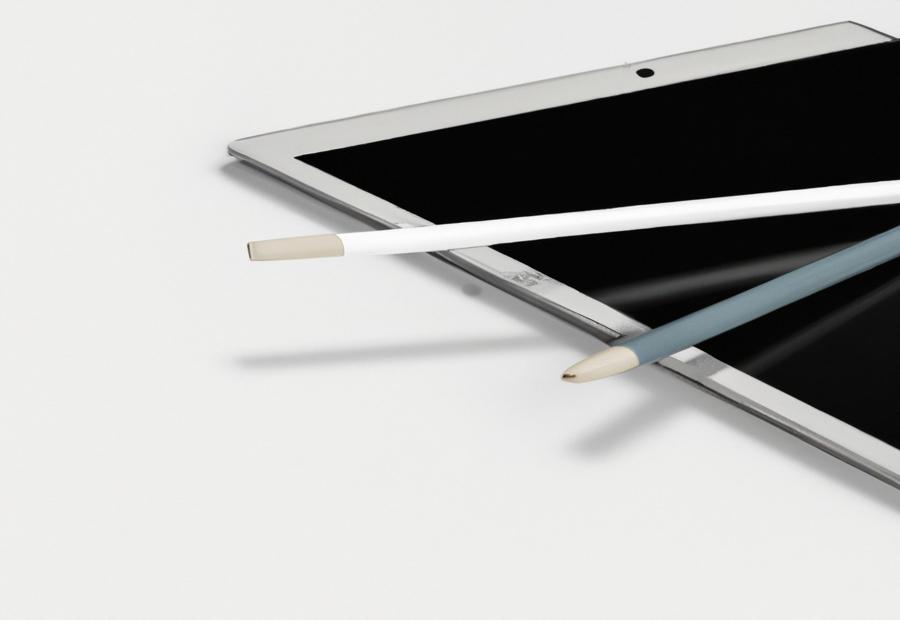
Photo Credits: Ipadmodels.Org by Eric Thompson
This article provides a comparison of various iPad models. The chart includes display size, storage capacity, processor, camera, and more. It’ll help you pick the best iPad for your needs.
The iPad lineup comparison chart is an in-depth evaluation. It has display size, storage capacity, processor, camera, battery life, and price. This analysis is based on the latest reference data. So, you can quickly understand each model’s specs and make a wise purchase.
The latest iPad Pro has a larger display and a more powerful processor. It’s perfect for those needing a high-performance and portable computing tablet. The iPad Air offers a feature-packed and high-quality tablet experience at a lower cost. With the help of the chart, customers can evaluate and select the iPad that meets their expectations.
Accessories to Enhance iPad Functionality
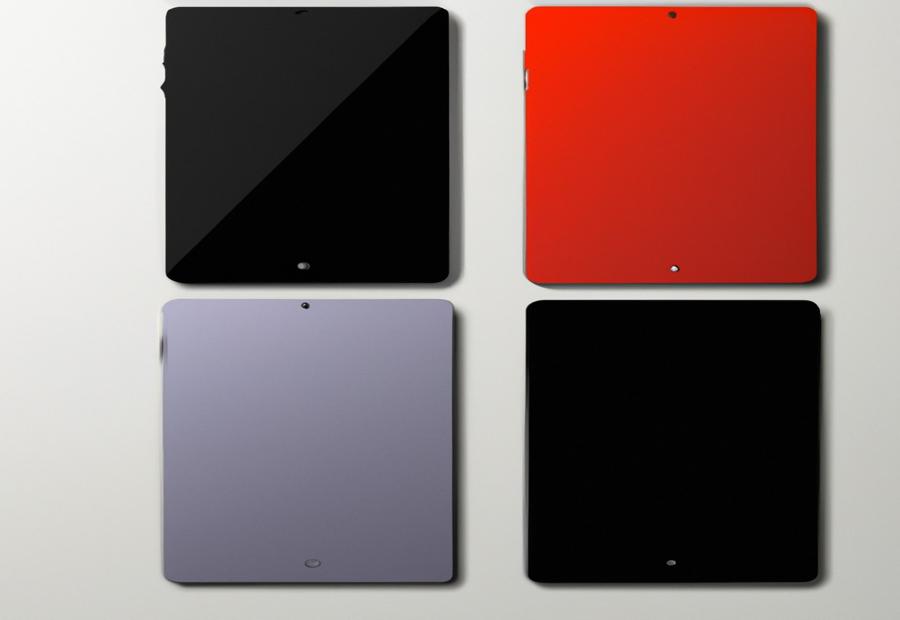
Photo Credits: Ipadmodels.Org by Peter Hall
Enhance the functionality of your iPad with these top accessories. These add-ons can elevate your iPad experience, whether you’re a student, professional or creative. The Zugu Case offers excellent protection for your iPad while the Logitech Combo Touch provides not only protective measures but also adds a keyboard and a touchpad for more productivity. For a keyboard-only option, the Logitech K380 Bluetooth Keyboard is a great choice. Apple Magic Trackpad 2 will give you a more reliable way to interact with your iPad, while the Apple Pencil is perfect for creatives who want to enhance their artistic capabilities on their device.
Zugu Case, Logitech Combo Touch, Apple Magic Trackpad 2, and Logitech K380 Bluetooth Keyboard
Transform your iPad experience with various accessories! Take the Zugu Case for example. It’s designed to be durable and comfortable, with a multi-purpose kickstand for adjustable viewing angles, plus synthetic leather for better grip. Plus, you can easily detach the fold-back magnetic covers when in use.
To type more efficiently, consider the Logitech K380 Bluetooth Keyboard. Or you could go for the Apple Magic Trackpad 2 for extra functionalities, like force-touch gestures. You can also choose the Logitech Combo Touch – a combination of an iPad case and detachable keyboard.
Check out the comparison chart in reference data section 8.1 to learn more about the compatibility, pricing, weight, material used, and special features of these accessories. They don’t just make using iPads easier – they enhance its look and protect it from scratches and drops. So why not invest in one or more of these options – Zugu Case, Logitech Combo Touch, Apple Magic Trackpad 2, or Logitech K380 Bluetooth Keyboard?
Apple Pencil
The Apple Pencil is a revolutionary digital stylus. It’s a must-have for iPad users. With precision, pressure-sensitive features and tilt-technology, it’s perfect for art, notes and documents. Great for artists, designers and students who need accuracy.
Compatible with a range of iPads. The latest iPad Pro has some unique functions. Like pencil-to-text conversion, double-tap gestures and magnetically attached charging. Also works with older models like the first generation iPad Air and the 2017 iPad.
It’s compatible with many apps in different fields. Eg, Notability for written notes while recording lectures. GoodNotes for quickly drawing charts and diagrams.
The Apple Pencil has revolutionized art creation. There’s a story of an artist who made a mural in Central Park, using an iPad Pro and Apple Pencil. They projected the digital sketches onto large canvas for tracing and painting. A popular approach for more flexibility and mobility when sketching.
The Apple Pencil is great for all iPad users. It makes digital note-taking and art creation seamless and precise. For an accurate comparison of iPad models, check out this iPad model comparison chart.
Brief History and Evolution of iPad
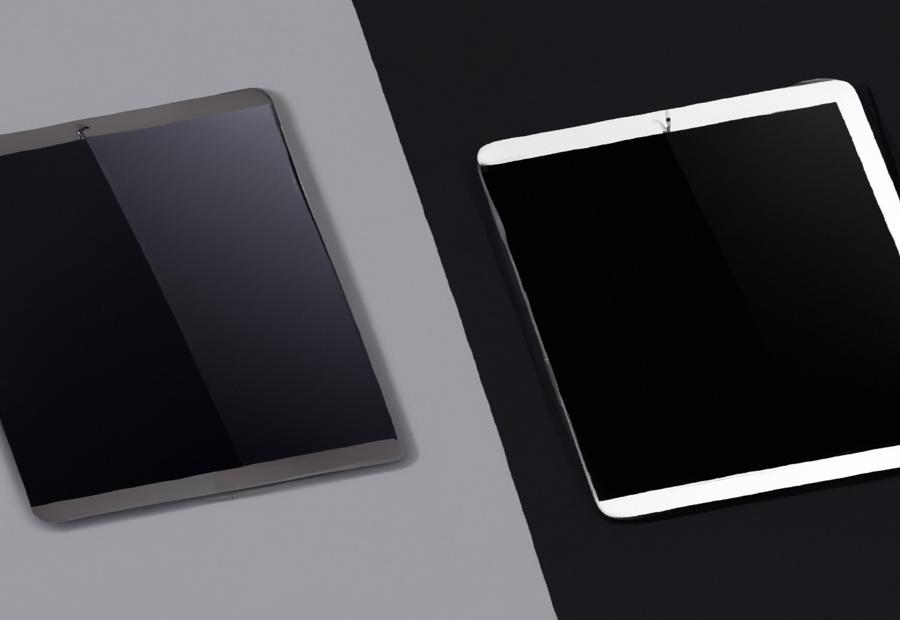
Photo Credits: Ipadmodels.Org by Jonathan Campbell
The iPad was first released in 2010 and was a game changer in the tablet market. Apple has continued to innovate and improve the product line, with the latest models boasting advanced features and a sleek design.
Over the years, the iPad has undergone significant changes and improvements, from the original iPad to the latest models. In addition, the switch to iPadOS and restrictions on the App Store have impacted industry applications and market share.
Overall, the iPad remains a popular choice for consumers looking for a versatile and intuitive tablet experience.
Original iPad Lineup and Flagship Products
Apple launched their first iPad in 2010, boasting a 9.7-inch display, A4 Processor and 720p HD video recording abilities. It also had a long-lasting battery life of up to 10 hours and Wi-Fi connectivity. Apple has since updated this lineup several times, introducing various models with unique and improved features.
Let’s take a closer look at the iPad lineup specifications in the table below:
| iPad Model | Display Screen | Processor | Battery Life | Connectivity |
|---|---|---|---|---|
| iPad | 9.7 inches | A4 Processor | Up to 10 hours | Wi-Fi only or Wi-Fi+3G? |
Though the original iPads share features such as high-res Retina Display and improved camera capabilities, some advanced models offer ProMotion tech for smoother scrolling.
Switch to iPadOS and App Store Restrictions
The App Store has shifted to iPadOS, granting developers more creative freedom. But, restrictions are in place to secure Apple’s hardware and software. Reviews for app submissions are stringent. Yet, the guidelines may not be revealed until the process is done.
These rules act to block unauthorized third-party apps or libraries. It’s why some popular features may not work on iPads. Google Stadia is a prime example – it runs on many Android devices and Chromebooks, but not on iPads. This signals that developer support is restricted by iOS.
Market Share and Industry Applications
The iPad is popular for professional and personal use. It’s market share has grown over the years. A table shows how it is used in different sectors:
| Sector | Market Share | Use Cases |
|---|---|---|
| Healthcare | 30% | iPads are used for emergency care, nursing care, and mental health diagnosis |
| Education | 20% | Classrooms use iPads to enhance learning |
| Business and enterprises | 15% | iPads are versatile for various business purposes |
| Entertainment and media production | 10% | iPads are used for content creation like video editing or audio recording |
| Banking and financial services | 5% | iPads are used as point-of-sale devices |
| Other sectors | 20% | N/A |
Healthcare leads the way at 30%. iPads are used for emergency care, nursing care, and mental health diagnosis. In education, 20% of the market share comes from classrooms using iPads to enhance learning. Businesses and enterprises find iPads versatile, accounting for 15%. Entertainment and media production use iPads for content creation like video editing or audio recording, 10%. Banking and financial services use iPads as point-of-sale devices, 5%. The other sectors make up the other 20%.
Apple has changed the OS to iPadOS and tweaked the App Store to help app distribution. iPads have made a strong mark in various industries. Technology has limitations in all these fields.
Wi-Fi and Cellular Capabilities across iPad Models
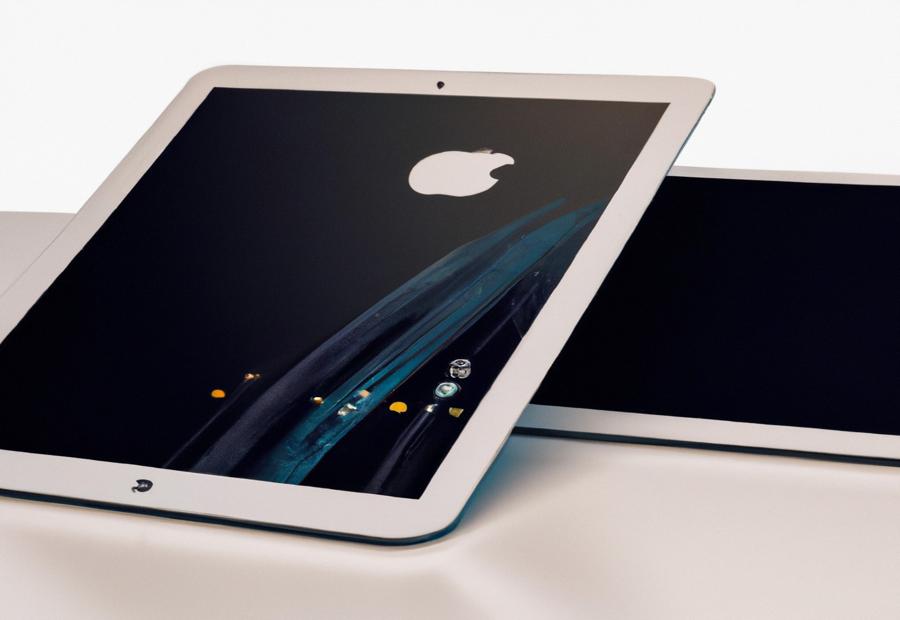
Photo Credits: Ipadmodels.Org by Austin Robinson
When it comes to iPads, there are several models available, each with its own set of unique features. In this section, we’ll be focusing on the Wi-Fi and cellular capabilities of these models. Specifically, we’ll be discussing the Wi-Fi speeds and bands for the 10.5-inch iPad Pro and the Wi-Fi standards for the 9.7-inch iPad. By understanding these differences, you’ll be able to choose the iPad model that best suits your needs.
Wi-Fi Speeds and Bands
Selecting the perfect iPad model for your needs is key. Different models have various Mbps capabilities and Wi-Fi standards. For instance, the fifth-generation iPad has both 2.4GHz and 5GHz bands, while the sixth-generation includes MIMO technology for data transfer speeds. All iPad Pro models come with standard MIMO and dual-band networks up to 160MHz.
Beyond technical specs, you must consider cellular connectivity, 5G & Bluetooth support. Compare models and ask yourself these questions to make a wise decision.
- Do I need a cellular model or will Wi-Fi only suffice?
- Do I need 5G connectivity or will 4G suffice?
- What is my budget?
To enhance Wi-Fi performance, there are special accessories. A Zugu case with a stand lifts the device off surfaces, and a Logitech Combo Touch keyboard has backlit keys and adjustable backlighting levels.
Choosing an iPad model with proper Wi-Fi is essential. Consider a range of criteria, not just Mbps ratings, to find the device that suits your lifestyle. With the right model, connecting to Wi-Fi on an iPad can be smooth sailing.
Wi-Fi Standards
All iPad models come with WiFi. But the standard of WiFi depends on the model.
The iPad Pro has Wi-Fi 6 (802.11ax) which means faster downloads and uploads compared to past iPads. Smooth streaming of HD videos, gaming, remote collaboration and better network efficiency are possible with this updated technology.
Other iPad models have Wi-Fi 5 (802.11ac). Both protocols let you use both 2.4 GHz and 5 GHz frequencies.
Before buying an iPad, consider your WiFi needs. If you need fast streaming of HD videos or fast file transfers, go for the latest tech. For the most benefit, upgrade your router to support these new standards. Also, mesh network extenders can help improve coverage area on any iPad model.
Conclusion and Final Remarks
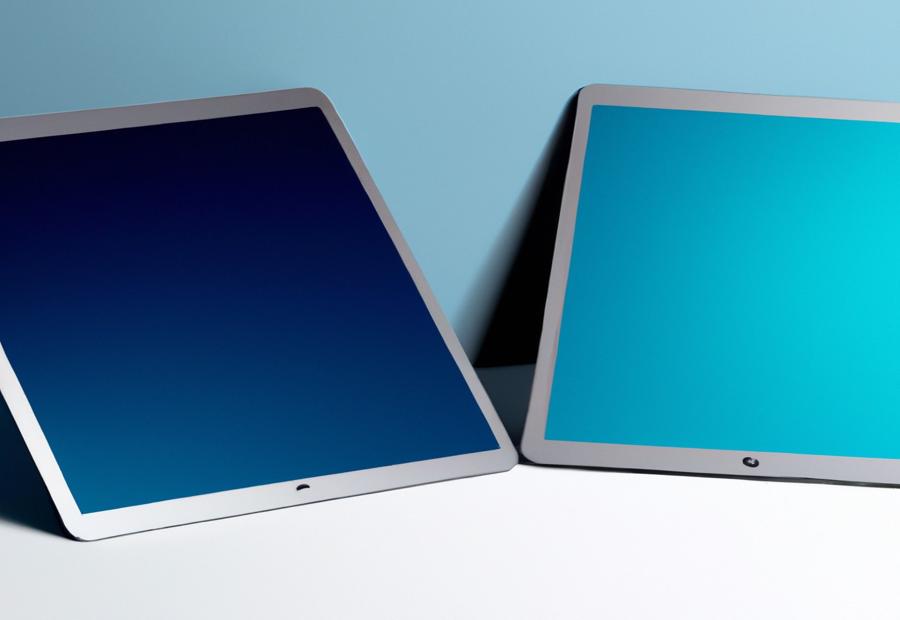
Photo Credits: Ipadmodels.Org by Jack Hall
After a thorough comparison of various iPad models, it is evident that each model offers unique features and capabilities, catering to different user preferences and requirements. The following conclusions can be drawn from the comparison:
- iPad Pro: This model stands out as the most powerful and feature-rich iPad available. It offers the largest screen size, highest performance with the latest processor, and exceptional graphics capabilities. The iPad Pro is ideal for professionals and creative individuals who require advanced multitasking, demanding applications, and high-quality content creation.
- iPad Air: The iPad Air strikes a balance between performance and affordability. It offers a powerful processor, a larger display than the standard iPad, and support for the Apple Pencil and Magic Keyboard. The iPad Air is suitable for users who need a versatile device for productivity tasks, multimedia consumption, and light content creation.
- iPad: As the entry-level option, the standard iPad provides a cost-effective solution for casual users and students. It offers a compact size, decent performance, and compatibility with the Apple Pencil. While it may lack some of the advanced features found in the Pro and Air models, it still delivers a smooth user experience for web browsing, media consumption, and basic productivity tasks.
- iPad mini: The iPad mini is a compact and portable option that appeals to those who prioritize mobility. Its smaller form factor makes it easy to carry and use with one hand. The latest iPad mini features an improved processor and support for the Apple Pencil, making it suitable for on-the-go productivity, reading, and entertainment.
Ultimately, the choice of an iPad model depends on individual needs, preferences, and budget. Professionals and power users may gravitate towards the iPad Pro, while the iPad Air offers a great balance of performance and affordability. The standard iPad and iPad mini cater to casual users and those seeking a more compact device. Regardless of the model chosen, all iPads benefit from Apple’s ecosystem, reliable software updates, and access to a vast range of apps designed specifically for the iPad platform.
Five Facts About iPad Model Comparison:
- ✅ The iPad offers a range of models with different screen sizes, including the latest models- iPad Mini (8.3 inches), iPad (10.2 inches and 10.9 inches), iPad Air (10.9 inches), and iPad Pro (11 inches and 12.9 inches). (Source: wolfoftablet.com)
- ✅ The latest iPad models (iPad Pro 6th generation) have 128GB, 256GB, 512GB, 1TB, or 2TB of storage and are powered by the Apple Silicon M2 processor. They also feature Face ID biometrics, high-quality cameras, and USB-C Thunderbolt/USB-4 connections. (Source: zdnet.com)
- ✅ Personal preference plays a role in choosing the right size, with some preferring a bigger screen for work and a smaller one for leisure. The 11-inch iPad is a popular choice for its size and weight. (Source: wolfoftablet.com)
- ✅ The iPad Pro is faster and more capable than any other iPad model, with download speeds up to 2.4Gbps, 15% faster performance, and up to 35% faster graphics performance. It supports external monitor and can run up to eight apps simultaneously. (Source: zdnet.com)
- ✅ Accessories available for the iPad to enhance its functionality include the Zugu Case, Logitech Combo Touch, Apple Magic Trackpad 2, Logitech K380 Bluetooth Keyboard, and Apple Pencil (2nd-gen). (Source: wired.com)
FAQs about Ipad Model Comparison
What are the different iPad models available?
iPad offers a range of models with different screen sizes, including the latest models of iPad Mini (8.3 inches), iPad (10.9 inches), iPad Air (10.9 inches), and iPad Pro (11 inches and 12.9 inches), as well as older versions like the 7.9 inch iPad Mini and the 10.2 inch classical iPad.
What is the size difference between the iPad models?
The iPad models range in size, with the iPad Mini 6 being the smallest (8.3 inches) and the 12.9 inch iPad Pro being the largest. There are other options in between the smallest and biggest sizes, offering various preferences and needs.
What are the features of the latest iPad Pro model?
Apple has released the 6th generation iPad Pro with two display options: 11-inch Liquid Retina and 12.9-inch Liquid Retina XDR, both with ProMotion and True Tone. It is powered by Apple Silicon M2 processor, has Face ID biometrics and 12MP wide and 10MP ultrawide rear cameras, and a 12MP TrueDepth FaceTime front camera. It supports the 2nd-generation Apple Pencil and has USB-C Thunderbolt/USB-4 connections. The dimensions of the 11-inch model are 9.74 x 7.02 x 0.23 inches, and the 12.9-inch model is 11.04 x 8.46 x 0.25 inches. The device has a battery life of 10 hours and offers storage options of 128GB, 256GB, 512GB, 1TB, or 2TB.
Which accessories are available for the iPad?
There are various accessories available for the iPad to enhance its functionality. Popular options include the Zugu Case, the Logitech Combo Touch, the Apple Magic Trackpad 2, the Logitech K380 Bluetooth Keyboard, and the Apple Pencil (2nd-gen). These accessories can provide a better user experience by improving productivity, comfort, and creativity.
What is the significance of the M2 chip?
The M2 chip is a processor used in the latest iPad Pro model, which has 20 billion transistors, 25% more than the M1, and is the same processor used in the new 13-inch MacBook Pro and MacBook Air. The iPad Pro is faster and more capable than any other iPad model, with download speeds up to 2.4Gbps, 15% faster performance, and up to 35% faster graphics performance. It can handle a large workload with Stage Manager and external monitor support, allowing up to eight apps to be open and in use simultaneously.
How do I choose the right iPad model for me?
Choosing the right iPad model ultimately comes down to personal preference and needs. Some people may prefer a bigger screen for work, while others may prefer a smaller one for leisure. The 11-inch iPad is a popular choice for its size and weight. Reviewing a comparison chart of the different models, along with their dimensions, weight, and features, can also help to choose the best fit.